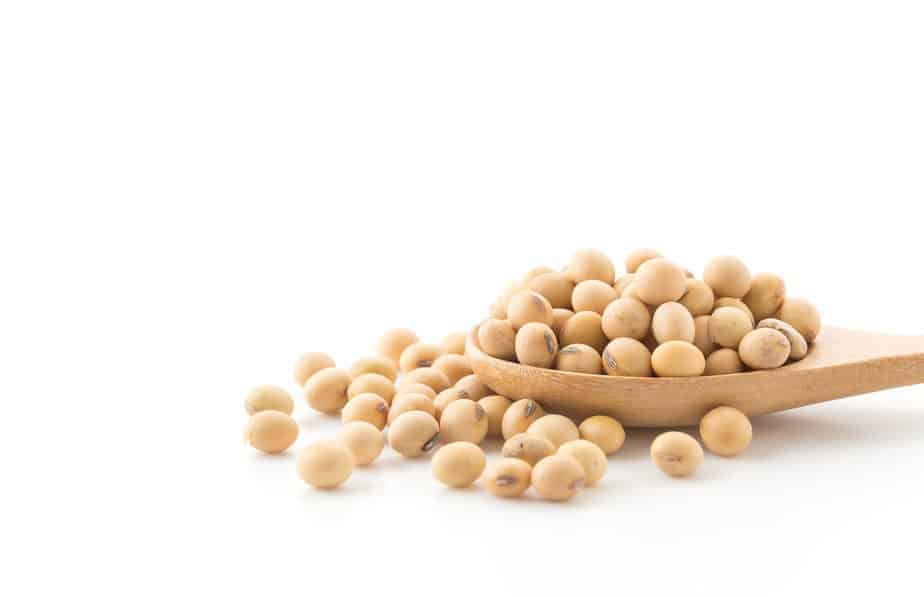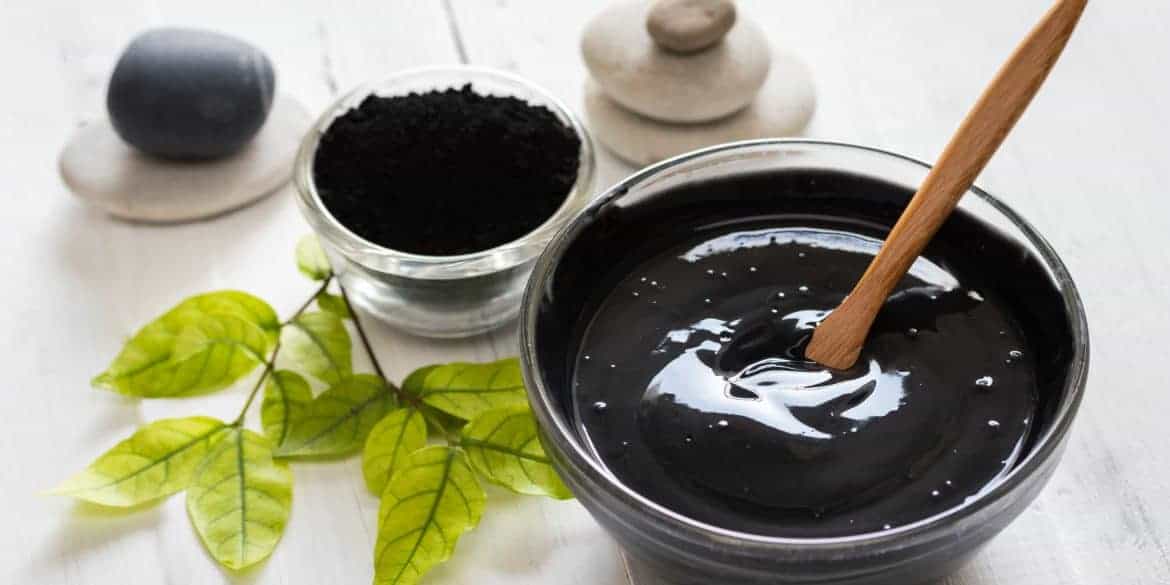Are you going Soy Free? Soy-free means removing all soy products, foods, and reading food labels diligently to eliminate all soy from your life.
If you’re going soy-free, it’s essential to learn and realize that this little guy is found in everything. So to eliminate it, you first need to learn about it and learn where this ingredient hides in your day-to-day foods. It is also beneficial to learn the differences between Food Allergy, Food Intolerance, and Food Sensitivity.
What is Soy?
Soy comes from the soybean, which is a species of legume. Soybeans are made into soy milk, tofu, tempeh, soy sauce.
Soy products extend far beyond soy milk and soy sauce. This ingredient is also used in almost all processed foods, meats, and skincare products, shampoo, and the list goes on. That’s right soy is found in more than just our food but also our non-food products.
Soy Allergy
Soy allergy can be developed as an infant (soy formula) and then outgrown as the child grows older. For others, they will continue with the soy allergy throughout adulthood.
Allergy or intolerance to soy can vary from person to person. You may have mild or severe reactions when consuming soy.
When a person has an allergy, their body begins to produce immunoglobulin E antibodies to the allergen. Being allergic to soy and ingesting it causes these antibodies to signal the immune system to release histamine and a variety of other chemicals. The histamine and other chemicals produce all of the allergic symptoms. The histamine is part of what causes the most responses, such as itchy eyes, rashes, dry throat, nausea, hives, runny nose and diarrhea.
https://aacos.com/blog/soy-allergies-symptoms/
Symptoms of Soy Allergy or Sensitivity
Everyone is different, so what one reaction may be for one person doesn’t mean you will have the same reaction. Listen to your body and pay attention to the allergy symptoms that are happening to you.
Symptoms
Coughing
Diarrhea
Dizziness
Flushing
Hives or rash
Indigestion and digestive discomfort
Nausea
Runny nose or watery eyes
Shortness of breath
Stomach cramps and pain
Swelling of the mouth, throat, lips or facial swelling
Tightness of throat
Wheezing
Vomiting
Severe Allergic Reactions Although Rare for Soy Allergy
Anaphylaxis
If it’s determined that you have a severe soy allergy in addition to avoiding all soy products, you may be prescribed an Epi-pen or epinephrine.
It’s important to note that these symptoms can also mirror a reaction to other ingredients such as a wheat allergy or gluten sensitivity. An elimination diet can better help you determine which item is causing your symptoms.
What is Soybean Agglutinin?
Also known as soybean lectins, lectins are found in soybeans.
Soybean agglutinin (SBA) is a non-fiber carbohydrate-related protein and the main anti-nutritional factor that exists in soybean or soybean products.
https://www.ncbi.nlm.nih.gov/pmc/articles/PMC5855776/
Where can Soy hide?
Soy Food Products
Baked goods
Crackers
Cereals
Canned Tuna
Canned Meat
Candy/Chocolate
Canned Broth or Soups
Edamame
Energy Bars or Protein Bars
Infant Formula
Meat alternatives / vegan meat substitutes
Miso
Peanut Butter
Soy milk
Shoyu
Soybean
Tamari
Worcester Sauce
Soy Sauce
Vegetable Oil
Processed foods – Read the label for soy in the ingredient list.
On the Food Label look for: Contains or May Contain underneath the ingredients list. Soy will be listed if it’s in the food.
My Experience With a Soy Allergy and Going Soy Free
I’ve been tested for gluten sensitivity and had a Food Immune Reactivity Screening done in 2016. According to my results, I have a soy sensitivity, specifically a Soybean Agglutinin (SBA). I also had a Gluten Associated Cross-Reactive Foods and Foods Sensitivity testing at the same time. My results are normal and in the green range.
At the time of the results, I’m told to stay away from all soy, mango, flaxseed (results are red or out of range), and cod of which I was in the yellow range. I was told that I do not have a gluten intolerance as my results were all in the green or normal reading.
However, at the time, I tried and failed to stick with avoiding soy as it wasn’t an allergy, I thought. Same for mangos. It wasn’t until recently when I did a 5-day detox and ate a slice of pizza that I realized I have a wheat or soy allergy at the very a least an intolerance.
That’s right 4 years later it finally clicked.
What can I say when you’re ready to learn something and open to making changes suddenly things appear very clearly.
I thought about all this testing I had done way back in 2016. Did I already know this, and just forgot?
So, I dug up my test results, I keep all my medical testing, and sure enough there it is – soy intolerance. Specifically soy agglutinin, but according to the results, I’m ok with gluten as there was no reactivity in the testing. So I’m ok with gluten but not soy? Or maybe it’s the wheat? I don’t know.
I started a food journal and avoided all soy and wheat from my diet. It was tough to do in the beginning. Soy and wheat are freaking in everything. You go back to eating whole foods and eliminate all processed foods.
According to my food journal, I do have reactions. Watery eyes and congestion are my reactions after eating certain foods. I scanned all my food labels with the Shop Well app (I’m not an affiliate). This app immediately tells you what ingredients are in the product, and offers better alternatives. I have my app preset to alert me of any wheat or soy ingredients. It’s a time saver.
Soy is in disguise under different names as the ones mentioned below.
I’m not going to remember every single one, so I use this app.
I write down whether something I ate contained soy, corn, or wheat. Then I note any reactions I have after eating. For me, my reactions start about an hour and a half after eating, every time. My eyes water non-stop, and I become congested at the same time.
Sometimes, my heart will race, and I notice swelling in my fingers. This will last for a few hours before subsiding. Congestion, however, will linger through the night, causing sleep issues.
For most of my meals, I did my best to avoid the culprits and had no reactions. I feel better, bloating is gone, my sinus has cleared, and brain fog is gone. This is awesome because I’ve been battling this brain fog for years. I’m always on the hunt to clear it up somehow. It never occurred to me that it was a food allergy.
I’ve always thought it was seasonal allergies, which I’ve battled most of my life. If you fight seasonal allergies too, it’s worth trying an elimination diet to see if your symptoms improve after removing wheat, gluten, corn, soy, or other known food allergens.
Still, I’m not sure if it’s just the soy causing these problems or gluten or wheat. Some of the symptoms like watery eyes, bloating, and congestion are also related to wheat allergy or gluten intolerance.
Since my testing revealed that I didn’t have a gluten intolerance or sensitivity, is it possible that I still have sensitivity—more on gluten sensitivity experience.
If you have a soy allergy or soy intolerance eliminating soy from your diet can be tricky at first. It will take time to learn where soy hides and when you do you’ll learn quickly that it’s in everything.
Everything.
We’re not just talking food here either, soy is even found in non-food items too.
Soy Non-Food Products
Candles
Cleaning products
Cosmetics
Hair products like shampoo/conditioner and hair styling products
Lotion
Medications
Pet food
Soap
Supplements
Why Is Soy Found in So Many Foods?
Soy acts as an emulsifier, mixing fats with water and binding them, keeping products from getting dried out, or separating.
If you are beginning your soy-free journey, know that it’s going to take some time before you’re 100% soy-free. Soy is found in unexpected things like chocolate. I didn’t see that one coming until I read all the ingredients. Ugh, now I have to find soy-free chocolate too!
I recommend starting with scanning over all your current food on hand. Learn the different names for soy and start going through everything one by one.
Other Soy Names to Lookout For
Artificial flavoring
Bean Curds
Candy / Chocolate
Deli Meats
Edamame/Soybeans
Glycine max
Hydrolyzed soy protein
Hydrolyzed vegetable protein (HVP)
Kinnoko flour
Kyodofu
Lecithin
Margarine
Mayo
Miso
Mono-diglyceride
Monosodium glutamate (MSG)
Natto
Natural Flavoring
Okara (soy pulp)
Shoyu sauce
Soy albumin
Soy bran
Soy concentrate
Soy fiber
Soy flour
Soy formula
Soy grits
Soy lecithin
Soy milk
Soy miso
Soy nuts
Soy nut butter
Soy protein,
soy protein concentrate
Soy protein isolate
Soy sauce
Soy sprouts
Soya
Soya Flour
Soybeans
Soybean granules
Soybean curd
Soybean flour
Soy lecithin
Soybean paste
Supro
Tamari
Tempeh
Teriyaki sauce
Textured soy flour (TSF)
Textured soy protein (TSP)
Textured vegetable protein (TVP)
Tofu
Vegetable Broth
Vegetable Oil
Yakidofu
Yuba (bean curd)
*I’m sure there is more than what is on this list. Please be diligent in checking all other possible names.
You may need to separate products that are soy-free vs. not so you can easily find your soy-free items. This is especially true if you are the only one in your family going soy-free.
For easy reference, I wrote soy on the label, nice and big, so I would know before using that product. Not everyone in my family needs to be soy-free. That’s a slower transition. Right now, I’m focusing on what I can eat without the struggle of finding something my littles will eat plus be soy-free. Not to mention one of my daughters has a dairy intolerance, and we’ve been working on that too, one step at a time.
You’ll notice that cooking will be at the forefront of going soy-free.
This will ensure you are not consuming soy in your food. I’ve slowly made the changes to finding soy-free alternatives to soy sauce, salad dressing, and chocolate chips.
You’ll be doing a lot of reading of labels or ingredient lists to find what will be truly soy-free. If I eat something and then have an unexpected reaction, my eyes start to water, I go back and review all the ingredients.
More times than not, I overlooked a hidden ingredient. One slight overlook, and I’ll notice it within that one-and-a-half-hour timeframe. It’s also worth the mention that eliminating gluten and corn has made a significant impact on my seasonal allergies, brain fog, and energy levels too.
Eliminating these three foods has opened my eyes to how much wheat, gluten, or soy intolerances can affect your wellbeing. I recommend reading Wheat Belly for more information on how wheat can impact your health. It was certainly eye-opening, and of course, I put it to the test and implemented it in my life. The results are amazing!
Now, it’ll be easier to start with eliminating one problem food source at a time and then move on to the next. This will make it less overwhelming to make this change in your eating habits. Now that I’ve been doing it for three months, it’s not as overwhelming, but it can still be frustrating trying to find a product that is wheat, gluten, and soy-free.
The other alternative is to make your condiments at home and go that route. I’m not there yet. That will be the next step, but for now, I’m still working on adapting to this lifestyle at every meal of every day. Any “shortcut” you can make right now will ensure you stay on track.
Any recommendations for soy-free products can be left below in the comments. Thanks in advance for your help with this change.
I wish you peace and guidance on your soy-free journey. Take care and be well.
UPDATE 1/9/2022
I recommend trying an at-home food sensitivity test in your quest in finding what foods you are allergic to or have a sensitivity to. This will help you in not wasting time trying to figure out if you are eliminating foods that you don’t need to eliminate unless you want to.





Thank you so much for this information! I recently did a food sensitivity test and soy and corn and most sweetners plus beer and brandy were on mine. I’m trying to start with the soy but my goodness it’s in so much. You really need to cook for yourself and have soy free snacks with you.
Another blog said Trader Joe’s has soy free chocolate and soy free mayonaise and soy free chicken stock that I’m going to stock up on.
You’re so welcome! Getting a food sensitivity test can be life-changing. It can be challenging, in the beginning, making all the adjustments, but the reward of finally feeling better is worth it! Thanks for the info about Trader Joe’s. I’m going to check them out! I wish you much success on your food journey. If you’re feeling overwhelmed, try eliminating one food at a time, then incorporate the next one.